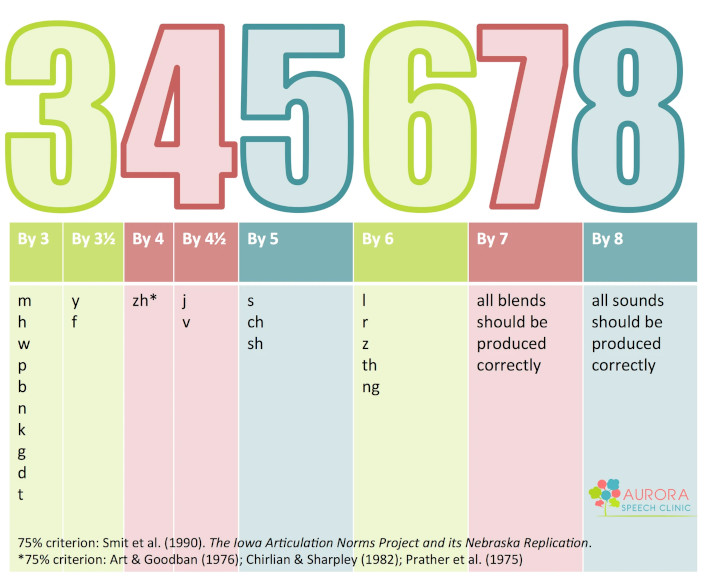Speech is a complex motor act that requires the co-ordination of the brain, lungs, vocal folds, and articulators (jaw, tongue, lips, etc).
As such, it is common for young children to make speech sound errors while learning to talk and say new words.
Generally speaking, speech sounds have an expected age range of acquisition; if errors persist past this age range, your child might be experiencing a speech production delay or disorder.
Children with speech production delays/disorders may make errors in one or more of the following ways:
- Substitutions: This is where a child substitutes one speech sound for another. For example, “wabbit” for “rabbit” where a “w” is used instead of the “r”
- Omissions: This error occurs when a child drops (omits) a sound from a word. For example, “top” for “stop” or “nana” for “banana”
- Distortions: This error occurs when a child produces a sound that is not quite right (sounds distorted). For example, “thoup” for “soup”
- Additions: This error is where a child adds a sound that shouldn’t be there. For example, “do-guh” for “dog” or “buhlack” for “black”
Use the chart below…
This chart provides a general guideline of when most children should be able to say each speech sound correctly.

Speech-Language Pathologists can help with speech production errors!
SLPs teach people how to produce sounds correctly.
While this may sound easy, there are hundreds of muscles involved in speech so learning and using a new speech sound habitually can be hard work (just think about how hard it is to perfect your golf swing, learn a new dance move, or learn to play the guitar).
Speech sounds must be mastered in isolation before they should be practiced in syllables, words, phrases, sentences and conversation.
Therapy sessions typically involve intense practice in order to change the old motor patterns and learn new ones.
Outcomes are usually best when direct therapy is paired with daily home practice.
As part of the initial speech assessment, the SLP will consider the typical age of acquisition of the sounds, which ones are easier to learn, which ones your child can imitate, which sounds will be most functional and how often they are used in the English language (thereby how much they impact intelligibility).
And much more!
You can help your child at home!
Children learn speech sounds by listening to the speech around them.
You can help you child by modeling and emphasizing the correct articulation in everyday conversation (i.e. try making difficult sounds louder and longer).
For example, if your child asks, “are we going in the tore?” you can respond with: “yes, we are going to the ssstore. Let’s pick up groceries at the ssstore.”
It is important that you acknowledge your child’s message rather than solely pointing out their speech errors.
It is also not recommended that you constantly correct or interrupt your child to correct his/her mistakes.
In addition to modeling the correct production of the sound in your own speech, your child may find it helpful to watch your mouth as you say the sound/word- so try to draw extra attention to what your mouth is doing by getting down to your child’s level and pointing to your lips!
Consider contacting a Speech-Language Pathologist for a speech production assessment if your child is experiencing any of the following:
- Not using the sounds that would be expected at his/her age
- Is difficult to understand
- Gets frustrated because he/she is not understood
- Can’t produce the sound correctly that you would like him/her to be able to use
- Is school age and has many sound errors
- Appears to have difficulty sequencing one sound to the next (stay tuned for a blog post on Motor Speech Disorders)
And please do reach out to us with questions!
372 Hollandview Trail, #302,
Aurora, ON L4G 0A5
(905) 503-4321
» https://goo.gl/maps/fg3XKnNsczzwLzTz7
Aurora Speech Clinic is located in Aurora, ON and offers personalized skilled intervention to those struggling with their speech and language skills. Services offered include screening, consultation, and comprehensive evaluation. We also provide one-on-one and/or group therapy for speech sound disorders, receptive/expressive language delay/disorder, stuttering/cluttering, accent reduction, and much more.